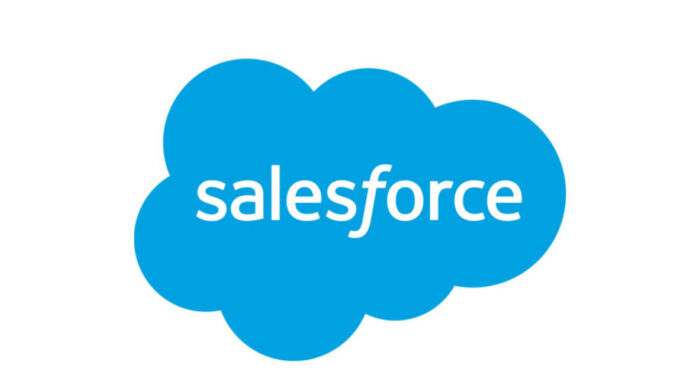Having a CRM like Salesforce can surely perk up the performance and productivity of your organization. You can hire salesforce developers and further customize the Salesforce apps as per your business requirements.
But, in today’s competitive environment, that’s not enough as your competitors are probably doing the same. Your Salesforce development and deployment pipeline needs to be automated for better deployments, accelerated business processes, and shorter lead times.
Automation in Salesforce releases can help you greatly as long as you have planned and developed it appropriately. So, let’s look into the Salesforce releases and automation in these processes elaborately.
Salesforce Release Management
If you have implemented the Salesforce solution with your software, you would know that it is a continuous process. Salesforce releases new features and functionalities from time to time and business units leverage these as they release new features periodically. These releases can be weekly, biweekly, several times a day, monthly, or several times a year.
Release Management is the process that helps streamline how and when to release these updates. Right from planning to development and testing, a Salesforce developer has to take care of many things.
Thus, automating the continuous integration, development, and deployment of Salesforce services becomes essential. It can help with consistent releases, better ROI (return on investment), minimal errors, and improved release velocity.
Automate Salesforce Releases: Here’s What you Should Know
Automating Salesforce releases requires you to automate and manage multiple processes. You can use multiple Salesforce tools to automate these processes or hire dedicated salesforce developer and entrust them with the tasks.
The best practice is to have access to the right tools along with suitable experience to automate these releases efficiently. Thus, implementing continuous deployment or continuous integration (CD/CI) is necessary.
CD/CI
Implementation of CD/CI and the need for a mature DevOps is absolutely necessary today. With automation of Salesforce releases, manual tasks can be reduced sufficiently, accelerating the productivity and growth of your organization and CI/CD can be of immense help.
But, implementing them appropriately in your system requires more effort. And often, businesses are seen seeking manual help which undermines the process of automation. However, with suitable salesforce developers for hire, you can achieve better automated processes.
Deployment automation
With automation in Salesforce deployment, you can push your software to the production and testing environments with a single click. It can help minimize various risks and assist in the processes such as –
- Single-click deployment to change metadata.
- Deploying changes from version controlling system or Salesforce org.
- Transferring components from the development stage to production with automation.
Unit testing automation
When we talk about Salesforce release automation, it’s not only about speedy and faster delivery of projects. It also concerns with the quality of releases that can contribute to the growth of an organization.
Continuous integration or deployment ensures you have more time and opportunities to diagnose and rectify these errors. It ensures the system is mostly error-free when it moves to the production environment.
Version controlling
To improve time to market and release velocity, automating version control processes are essential. It can accelerate your version control integration with the help of the auto-commit feature, manage or merge codes from several developers, and so on. With automated version controlling, the room for error during transferring changes from Salesforce to version control will be reduced significantly.
Sandbox management
Sandbox works like a safety net in the Salesforce development environment. Whether it is for development, testing, training, or deployment, Salesforce has different Sandbox types to aid in this process without compromising your business unit’s data.
With Salesforce Sandbox management, you would be able to synchronize releases and compare the changes in each cycle. If you hire dedicated salesforce developers who can manage Sandbox for good, you will be able to remove any redundant data, automate backup schedules, or access reports or logs with deployment issues, warnings, etc.
The Salesforce CRM solution is one of a kind and can help accelerate your business processes significantly. But, it requires monitoring and careful management that can be brought with automation only.
So, make sure to synchronize your various processes of development, integration, testing, and deployment, and bring automation to your Salesforce releases. However, it is a no-brainer that you will need qualified resources who can help you customize the processes to your requirement. Make sure you choose the right help and implement Salesforce solutions effortlessly to your system.
Summary:
Automation in salesforce release processes can bridge the gap between lead generation and conversion. With a shorter time to market and improved deployments, the Salesforce release automation can help businesses greatly. Here’s More about it!
Author Bio:
Maulik Shah is the CEO of BiztechCS, a development company. He often takes the front seat in the company’s development projects, because he enjoys solving problems through technology. When it comes to writing for any blog, his contribution is priceless. Maulik ensures that his interaction with development is frequent enough, and his industry knowledge ever evolving, that he can share it. Despite his packed days, Maulik’s door is always open and he is generous with sharing this knowledge and experience.
Apart from this, if you are interested to know more about Rated Web Developers in India Services then visit our Business category






